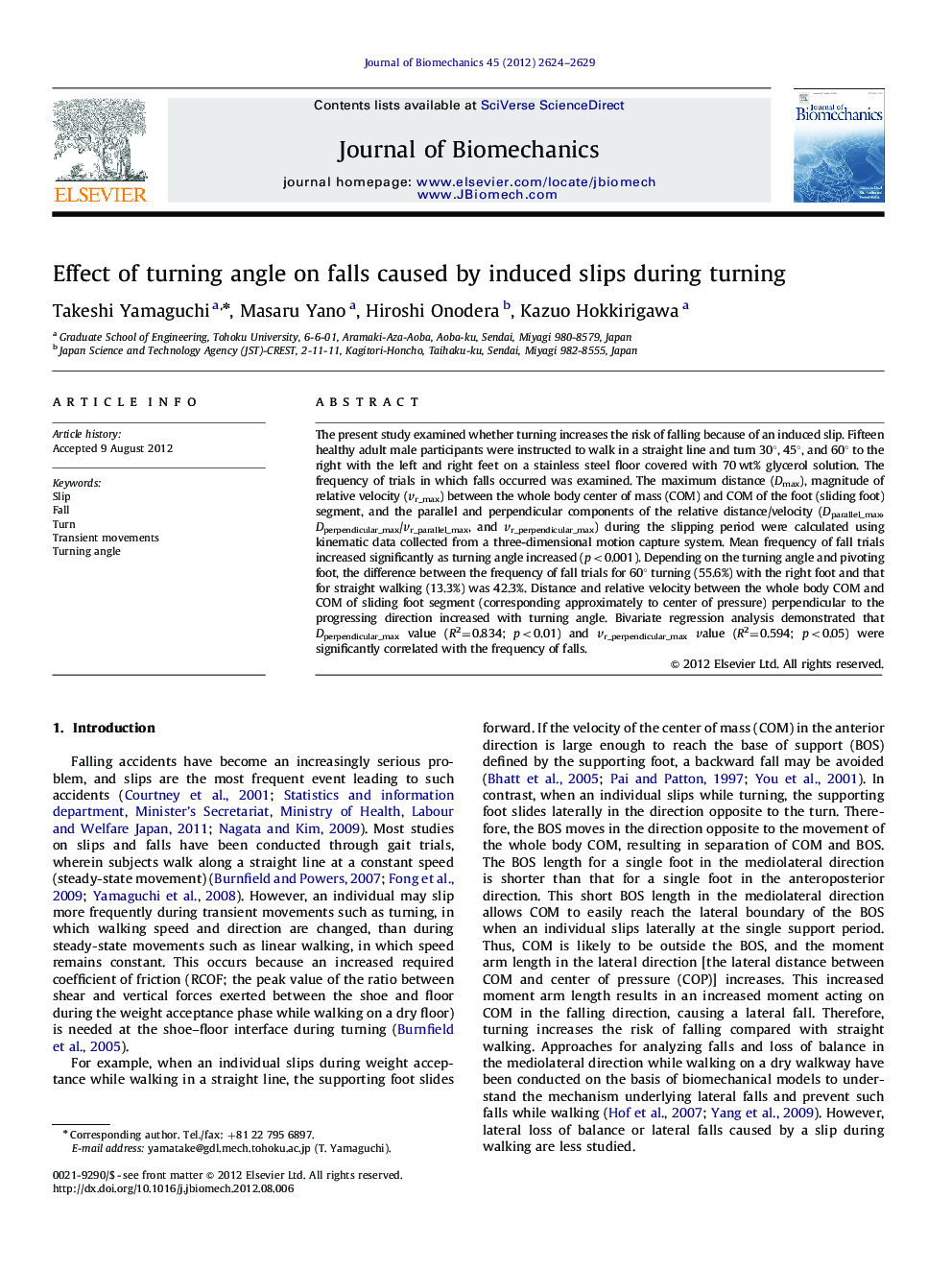| Article ID | Journal | Published Year | Pages | File Type |
|---|---|---|---|---|
| 872250 | Journal of Biomechanics | 2012 | 6 Pages |
The present study examined whether turning increases the risk of falling because of an induced slip. Fifteen healthy adult male participants were instructed to walk in a straight line and turn 30°, 45°, and 60° to the right with the left and right feet on a stainless steel floor covered with 70 wt% glycerol solution. The frequency of trials in which falls occurred was examined. The maximum distance (Dmax), magnitude of relative velocity (vr_max) between the whole body center of mass (COM) and COM of the foot (sliding foot) segment, and the parallel and perpendicular components of the relative distance/velocity (Dparallel_max, Dperpendicular_max/vr_parallel_max, and vr_perpendicular_max) during the slipping period were calculated using kinematic data collected from a three-dimensional motion capture system. Mean frequency of fall trials increased significantly as turning angle increased (p<0.001). Depending on the turning angle and pivoting foot, the difference between the frequency of fall trials for 60° turning (55.6%) with the right foot and that for straight walking (13.3%) was 42.3%. Distance and relative velocity between the whole body COM and COM of sliding foot segment (corresponding approximately to center of pressure) perpendicular to the progressing direction increased with turning angle. Bivariate regression analysis demonstrated that Dperpendicular_max value (R2=0.834; p<0.01) and vr_perpendicular_maxvalue (R2=0.594; p<0.05) were significantly correlated with the frequency of falls.
